Festivals of Tiruvannamalai
Every day is celebration in the kingdom of Tiruvannamalai. The main festivals of the kingdom in the Vedic calendar starting from the month of Chithirai (corresponding to April) goes thus. With the festivals, the lifestyle becomes a temple-based lifestyle and the central thought is kept on the Divine whatever one may be doing.
Festival Details
Chithirai (April – May)
Chittirai Vasanta Utsavam – 10 days
Vaikasi (May – June)
Vaikasi Utsavam – 1 day
Ani (June – July)
Ani Brahmotsavam – 10 days
Ani Tirumanjanam (Lord Nataraja Utsavam) – 1 day)
Adi (July – August)
Adi Pooram Brahmotsavam – 10 days
Avani Moolam Utsavam – 1 day
Puratasi (Sept. – Oct.)
Navarathri Utsavam – 9 days
Aippasi (Oct. – Nov.)
Annabisheka Utsavam – 1 day
Kanda Sashti Utsavam – 6 days
Karthigai (Nov. – Dec.)
Karthigai Deepa Brahmotsavam – 17 days
Margazhi (Dec. – Jan.)
Vaikunda Ekadasi Utsavam – 1 day
Arudra Darisanam (Lord Nataraja Utsavam) 1 day
Thai (Jan. – Feb.)
Uthrayana Punyakala Brahmotsavam – 10 days
Thiruvoodal Utsavam – 1 dayManalurpettai Theerthavari Utsavam – 1 dayKalasapakkam (Rathasapthami)Theerthavari Utsavam – 1 day
Maha Sivarathri festival
Masi (Feb. – March)
Masi Magam – Pallikondpattu Teerthavari festival (The main Annamalayar deity is crowned as the King in the absence of a royal heir to King Ballala of the Hoysala dynasty (an early 14th century ruler) whose statue adorns the Vallala Gopuram (temple tower) of the temple. Therefore Annamalayar or Paramasiva rules spiritually and politically in Tiruvannamalai.)
Panguni (March – April)
Panguni Uthiram – Tirukalyana Utsavam – 6 days
Every Full moon night called Pournami is celebrated most grandly when 3 million seekers gather and circumambulate the sacred Arunachala hill.
The Tiruvoodal festival
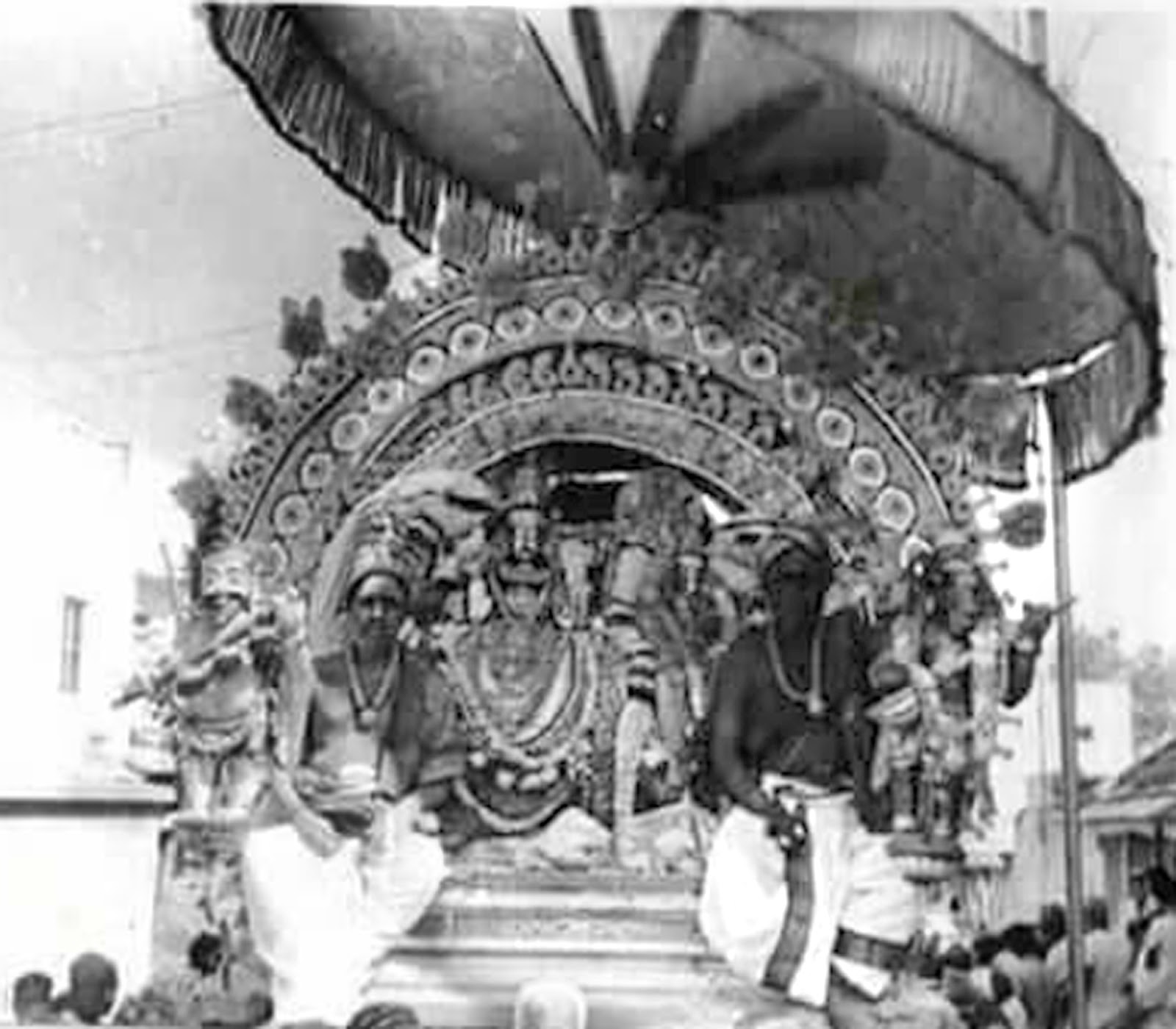
(Ardhanarishwara)

‘Tiruvoodal’ is the Divine quarrel between Paramasiva and His Divine Consort Parvati and it is celebrated in Tiruvannamalai during the month of January, the second day after the festival of Pongal. There is an entire street close to the temple called ‘Tiruvoodal street’ where the main part of the festival, the divine quarrel or the ‘Tiruvoodal’ is enacted by the chief priests of the Arunachaleshwara temple.
The Divine quarrel revolves around the time when one day Parvathi playfully closes the eyes of her august husband, Lord Shiva, with her hands. Utter chaos ensued. The whole universe was plunged in darkness and what was just a moment of play to Parvathi causes countless years of darkness and misery on the universe. Lord Shiva, enraged by this act of folly, punishes Parvathi which sends Her to Kanchipuram to do Tapas where She receives the assurance that after she kills the buffalo-demon Mahishasura on the slopes of Arunachala, She would subsequently regain the favour of her Lord and be united with Him in the left half of His body (Ardhanarishwara) and this is what is realised on the day of Karthigai Deepam.
It would seem that the Tiruvoodal festival is celebrated in Tiruvannamalai in order to commemorate the time when Shiva and Parvathi were in discordance. Nevertheless, it finishes with the divine union and brings them both back together in harmony. On the first day, there are three processions of the deities starting from the big temple and going on the four streets around the temple. The Utsava Murthis are Sri Mula Nayakar (Shiva in the form of Somaskanda), Tani Ambal (the independent goddess) and Sundaramurthi Nayanar (one of the main tamil Shaivaite saints).
The most interesting part of the festival takes place in the evening on Tiruvoodal street. During this part, the quarrel between Shiva and His consort, Parvathi, is enacted in public on the streets and witnessed by a large gathering of devotees who are assembled there eagerly to watch the divine drama. The God and the Goddess are brought on palanquins from opposite ends of the street and then borne down to face each other. The narrative of the quarrel is chanted by an Oduvar (temple singer) in tamil lyrics. After this ensues a dramatic dancing procession. Six times the God and the Goddess are borne down at a great speed and then meet in the centre and have their quarrel. This is played out by the palanquin bearers jumping and shaking the palanquin up and down, which makes it appear as if the deity inside is jumping up and down in a fit of rage. The temple musicians play their drums in fitting accompaniment, adding to the frenzied rantings of the gods as they are shouting at each other. After each quarrel-dance, the deities change sides and each goes off in the opposite direction from which he or she came initially. The crowds of devotees are hysterical with excitement and after each dance-quarrel, the tension mounts and so do the loud cries of fervor and devotion which increase in volume and fury.
The next day, Shiva is up at dawn and leaves on Giripradakshina during which he makes a halt at the Vedarpari mandapam where his jewels are supposedly stolen and later on he also grants salvation to his ardent devotee Kannappa. This is the reason for the Kannappa temple on that location. Shiva also grants darshan to another of his devotees the great rishi ‘Bhringi’ during this trip. Shiva eventually completes his giri pradakshina and returns to the temple.
Now a ritual called ‘maruvoodal’ takes place in the southern area of the temple which covers directly the sanctum sanctorum. Sundaramurthi Nayanar first goes to warn the Goddess about the return of Shiva.

She refuses to open the door for her Lord, accusing Him of circumambulating the hill and blessing people without her by His side and losing all the jewels. She tells him to the retrieve the jewels and also perform his extraordinary cosmic one-legged dance. Paramasiva starts performing the dance and she becomes so dazzled by her Lord’s beauty and splendour and submits to Him and wishes to be reunited. Thus the reconciliation and reunion of the gods take place and to celebrate this, both the deities are brought together and placed on the same pedestal and the priests perform an Arathi puja waving and encircling one single flame around both of the deities to signify the restoration of harmony.
The significance of the festival is to teach humanity that amidst all quarrels and incompletions, even there is huge financial losses (signified by the loss of jewels in the story), there should be only reunion and completion at the end.
Kartikai Deepam festival – the Oldest Hindu festival
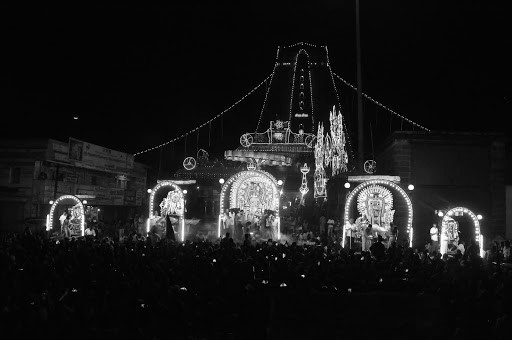
The 10-day Karthikai Deepam festival happens in the month of December in Tiruvannamalai. It is a celebration that demonstrates the Truth of ‘One becoming many’ meaning the Lord manifesting Himself as the five elements or life represented by earth, water, fire, air and ether and then ‘many becoming One’ where all beings realise they are nothing but Oneness with the Lord. It is also the day when Devi, the Universal Cosmic Mother and Divine Consort of Paramasiva realises herself as Ardhanareeshwara or Oneness with the Lord.
The festival starts off with each of the ten days, the Panchamurthigal comprising the five deities; Lord Ganapathi, Lord Murugan, Lord Chandikeshwarar, Lord Arunachaleswara and Goddess Parvati being carried in procession on the streets in different vehicles after the ceremonious Deeparadhana (offering of arati) to them in the kalyana mandapam. The deities bless the ocean of devotees congregated in the streets. While the remaining four deities
On the tenth day, a Great Flame is lit inside the Arunachaleshwara temple at 2’o clock in the morning. After puja (ritualistic worship), Arati is done by the temple priests by lighting a huge chunk of camphor on a golden plate and waving it around the Lord. The temple bells start clanging and the musicians beat on their drums. The temple walls resound with loud cries of devotion. The Arathi is brought outside and shown to the five lamps lit on earthen plates for which a Yagna (grand fire ritual offering) is already in progression. This is called Bharani Deepam, the prelude to the Kartikai Deepam that is lit later the same day atop the Arunachala hill. Its significance is that the universal Lord manifests as the five elements during the day and in the evening He again becomes the One Absolute Being and shines as Tejolinga when the Deepam is lit on the Hill. (Bharani is one of the 27 stellar constellations through which the moon is believed to pass through successively each day and according to the hindu almanac, Bharani precedes Krithika which is the constellation of Karthigai Deepam).
The earthenware lamps of Bharani Deepam are taken in procession around the temple. In the evening, on the Arunachala hill summit, there is a huge copper cauldron filled with ghee (poured in by devotees) and a wick made from many metres of cotton cloth rubbed with camphor after being steeped in the ghee. Millions of people arrive from worldover start circumambulating the Arunachala Hill. The roads are packed with an ocean of people.
Around sunset, at 6 p.m. to be exact, the deity of Lord Ardhanaareeswara is brought out ceremoniously and installed in the Deepa Mantapam in the big temple, facing the Hill. After Arathi is shown to the Lord, a thundering blast of fire crackers gives the signal to the men on the summit of the Hill to light the Flame. A fire torch is lit from the fire of the five earthenware lamps and taken to the Arunachala Hill top to light the Flame. It is a Full Moon night and as the Sun sets in the western sky and the beautiful full moon rises in the east, the flames of the Maha Karthigai Deepam spring forth into the sky on top of Arunachala, creating a wave of ecstatic devotion among the people. A tremendous roar of “Annaamalaiyurukku Haro Haraa” meaning “Glory to Annamalayar!” is heard from all directions. The Deepam burns brightly and fills our hearts with the powerful and vibrant presence of the Lord. Everyone stands awe-stricken in front of this splendid sight and thousands fall down on their hands and knees doing prostrating to the Great Lord. And thus the great festival of Deepam is completed.
The Lighting of the Flame on the Hill is a symbolic projection of the lighting of the Flame of Jnana (enlightenment or completion) in the inner space of each being.
PICTURES OF THE KARTIKAI 10-day festival
DAY 1 – Lord Panchamurtigal comes on Adhikari Nandi (The sacred bull vehicle of Paramasiva in standing posture, as the chieftain of Paramasiva).
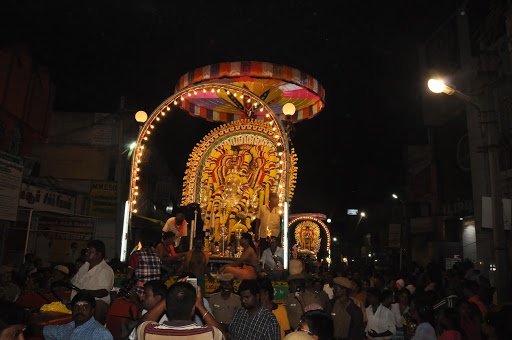
DAY 2 – The Lord Panchamurthigal on the silver Indira Vimanam – the silver chariot of Lord Indira
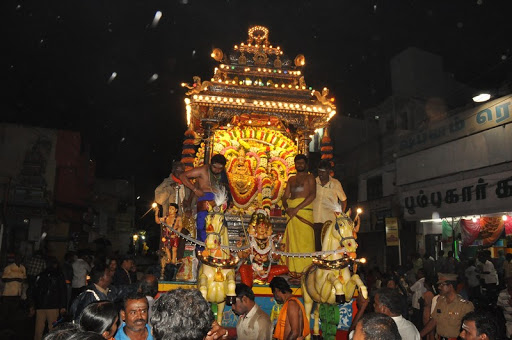
DAY 3 – The Lord Panchamurthigal in procession majestically on the Simha vahana, the lion vehicle.

DAY 4 – The Lord Panchamurthigal in the procession on the kamadhenu vahanam – sacred cow vehicle and alongwith the Kalpa Vriksha – boon giving tree.

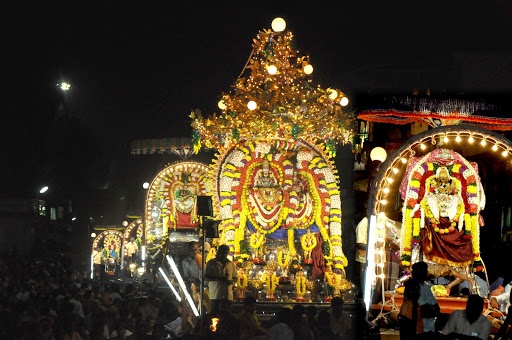
DAY 5 – The Lord Panchamurthigal on the Rajita Rishabha vahana – silver sacred bull vehicle
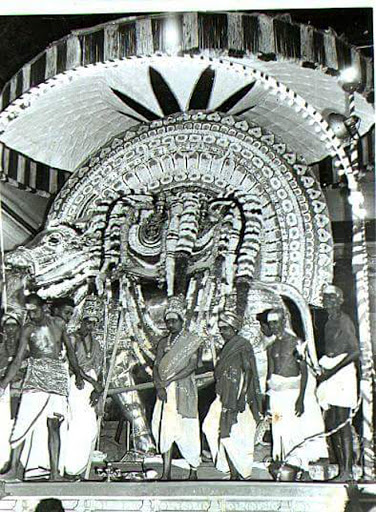
DAY 6 – The Lord Panchamurthigal on the silver chariot that is beautifully crafted
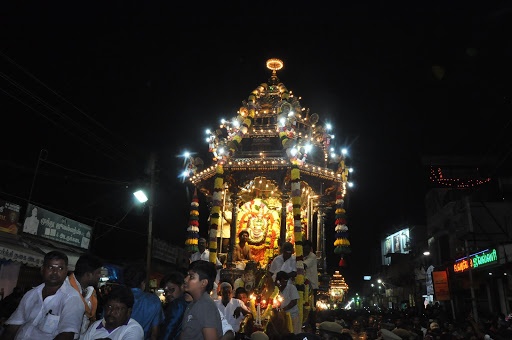
DAY 7 – The Lord Panchamurthigal in procession on the Maha ratham – the temple car that occupies the full width of the road. It is made of pure strong and rugged wood.
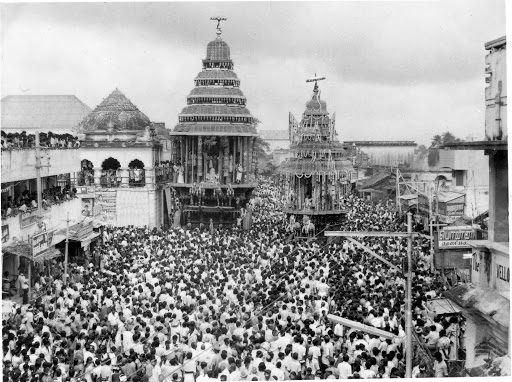
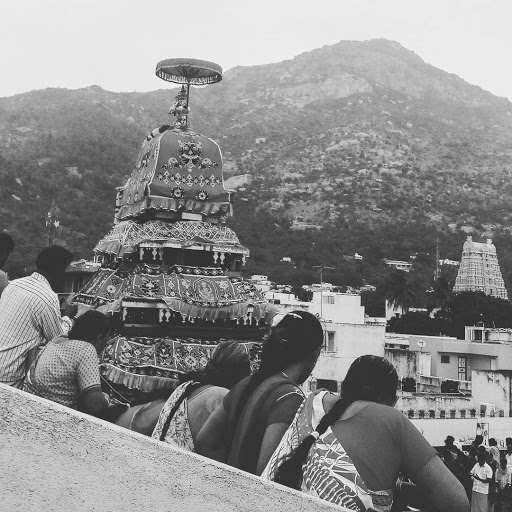
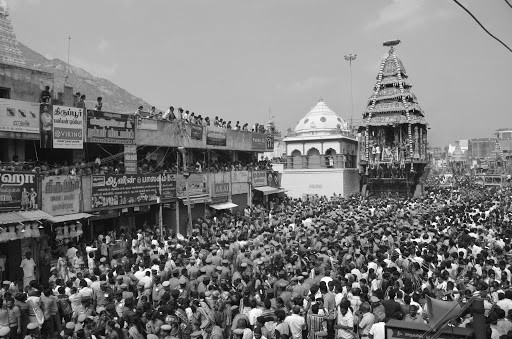
DAY 8 – Lord Panchamurthigal in procession on the huge Ashwa vahana – horse vehicle.
DAY 9 – Lord Panchamurthigal in procession on the Kailasa Vahana – Mount Kailash.

DAY 10 – Bharani Deepam in the early morning hours


DAY 10 – Kartikai Deepam at sunset. Mammoth gathering to witness the event

Vasanta Utsavam
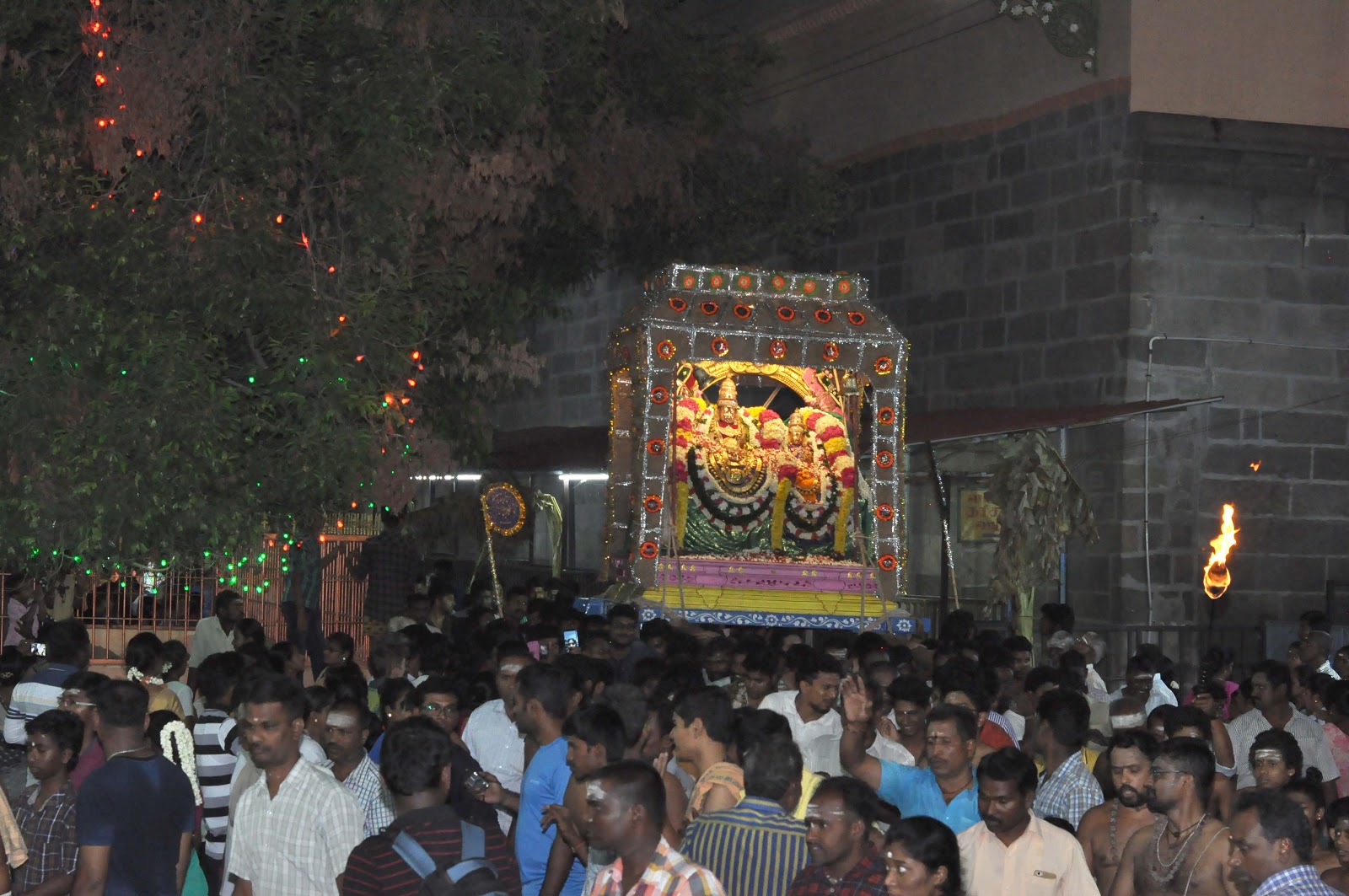
The Vasanta Utsav is celebrated to commemorate the momentous events that took place one fateful spring morning thousands of years ago, when Kama, the God of Love, decided to wield his Cupid´s bow and fire a flowery arrow into the heart of Lord Paramasiva Himself who sat in deep meditation. Paramasiva aroused in anger burns poor Kama to ashes with the flames of wrath leaping out of His Third Eye. Much later, Rathi the celestial consort of Kama appeals to Paramasiva in tearful agony and He, moved by her distress resurrects Kama out of the ashes. This festival symbolises the destruction of ignorance and blossoming of enlightenment.
This festival is celebrated inside the big temple of Arunachaleswara across ten days, when the presiding deities of Paramasiva and Devi are led in procession ten times each day around the Mahila maram (the sacred Mahila tree as seen in the picture) enacting various scenes of the story. In the town it is celebrated in 5 or 6 minor shrines dedicated to Devi or Subramanya. It is notable that the 10th and final day of the festival coincides with the full moon of the Vedic month of Chittirai.
Magudabhishekam – Crowning of Annamalayar – presiding deity of Tiruvannamalai – as King

During the Vedic month of Masi, during the occurrence of the Vedic star Magam, the Hoysala empire King Ballalla III dies without a heir. The presiding Lord of Tiruvannamalai Annamalayar Himself does the last rites for the king. This is performed as a ritual on this day every year on the banks of the river where the deity is taken out in procession to perform the last rites for the King. Following this ritual, the deity that is Annamalayar Himself is crowned as the ruler of Tiruvannamalai in the absence of a royal heir to the king. Therefore Annamalayar or Paramasiva rules spiritually and politically in Tiruvannamalai.

